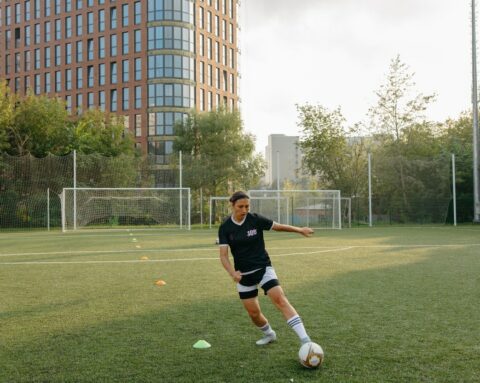Young athletes and adults are pushing themselves harder than ever before. Striving for the perfect
body shape, elite strength, speed and technique. The harder we work the more important it is to
take the time to properly plan to avoid injury and recover efficiently. Thankfully, there is more
information readily available to us all than ever before. In some cases, this allows us access to the
same planning and prevention tools that even the most elite athletes will select to properly
recuperate their bodies and avoid injury. If you would like to read more on active recovery and the
appropriate stretching to do before and after exercise, just click here!
It doesn’t matter if you are an elite athlete in the making or someone just beginning a new training
regime to improve your fitness levels. In order to move toward our fitness goals, it is crucial to avoid
injury. One of the best steps you can take to avoid injury is to speak to a specialist such as our
trained therapists at Studio Musculoskeletal. An expert is best placed to determine your ability to
perform certain exercises as well as if you should make any modifications to your training plan. It is
important to have your plans customised for any limitations or ongoing medical conditions.
Secondly, it is important to make sure you have the right exercise equipment to perform at your best
and avoid injury. The right shoes for your foot type can be absolutely crucial and have a dramatic
impact on whether you are able to stay fit. Ask an expert whether you are over or under pronating
to determine the best shoe type for you. One example that is commonly seen is people buying
runners for use at Netball shoes. A sport such as netball involves huge pressure on the joints in your
legs and requires specified shoes to help absorb the impact of the exercise. Having the right
equipment is something that is readily able to be controlled by us and as such we should take
advantage of this opportunity.
A lesser-known factor in preventing injury is to make sure you acclimatise to the conditions you are
in. For example, your body may be less able to handle the heat at the beginning of summer. There
are very clear examples of this when teams are forced to play in high altitude conditions in locations
such as Denver. The difference in oxygen in certain parts of the world can make it extremely difficult
for athletes to perform as usual and this can lead to injury. Another example can be seen in Australia
when teams such as Canberra travel to North Queensland for Rugby League games. Teams will
generally travel to these games slightly earlier than normal to give their player’s bodies more time to
adjust to the conditions.
One of the most common reasons for injury to occur is when someone jumps too quickly into a
training plan with a setting that is too high. This is often seen in new gym plans where an individual
will try to lift weights far too heavy for themselves without first building up the required strength
and endurance levels. It is also crucial to understand the proper technique for the exercises you will
be undertaken. There are many helpful tutorials available for one-off exercises, however, for your
specific plan, it can be helpful to get your physiotherapist to teach you the proper movements to
avoid injury.
Warming up is an extremely important part of injury prevention. A warmup should involve a short 5-
10-minute jog followed by dynamic stretching that mimics the activities you are about to perform in
your training session. Not to be confused with ballistic stretching, dynamic stretching routines are
defined by controlled movements that gradually transition in intensity. These can take the form of
activities such as leg swings before soccer. Be careful to ensure both sides of your body are
stretched symmetrically. One other potential risk factor that should be considered during the
warmup is to avoid over stretching tight muscles. A tight muscle may be a sign that your body
requires more rest and recuperation so be wary and listen to your body!
Finally, it is important to stay hydrated throughout your exercise period and warm down at the
completion of your activity. Warm downs are specifically designed to keep your heart rate elevated
above resting rate for 5-10 minutes. Try to incorporate low-intensity exercises that target similar
muscle groups that you used in your session. It is incredibly important if you have a chronic illness, a
family history of certain diseases or are over 40 and have not exercised in some time, to receive a
check-up by a trained physician. Get in touch with us at Studio Musculoskeletal to understand how
to manage and improve your physical abilities and health, without risking injury.






